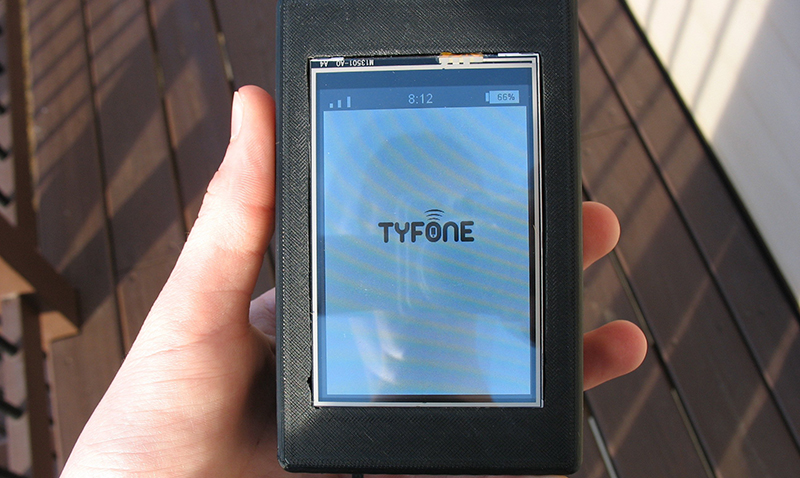It may not change the world, but [Tyler]’s DIY smartphone is a great example of what you can do with off-the-shelf parts. He built a complete, working cell phone using a Raspberry Pi, a few parts from Adafruit, and a 3D printed enclosure.
Inside the Tyfone is a Raspberry Pi Model A, an Adafruit FONA cellular module, a PiTFT, and not much else. There’s a 1200 mAh battery in there, and a 3D printed case keeps everything together.
For the OS, [Tyler] isn’t running Android; that’s only for the Raspi 2, and the Raspberry Pi 2 Model A isn’t out yet. Instead, [Tyler] wrote his own not-OS in Python. It can send and receive SMS messages, make calls, take pictures, connect to WiFi networks, and do just about everything else a Nokia from 2003 can do.
[Tyler] put together a video going over all of the features of his Tyfone. You can check that out below.





















Huh, neat! Obvious next step is putting that all on the same PCB. It would be very, very cool to get a phone on the market that could be easily hardware-modified. I did some work on an old iPhone 4s, just small things like antenna modification/better lights.
Hackaday post or it didn’t happen, lol.
Is the background music in the video also your ringtone?
I’d never do a open source phone.. You get a market share and your probability of lawsuits do to bugs and vulnerabilities affecting clients data go up a lot and owners of networks and their political connections are pretty much your boss whether you like it or not..
But I’m sure the reason Apple, Google, and Microsoft have buffer overflows and encryption problems is because they don’t have amateur circuit builders writing millions of lines of code for them..
Lucky for us Tyler hasn’t allowed these concerns to overshadow his hacker heart.
A phone that doesn’t run the popular apps, doesn’t have FCC certifications, you might have problems getting pass security checks…
So is it going to be production ready when there is no market? What major issue is it going to solve?
I don’t see why it would be a problem any more than any other electronics… and the cell module is FCC certified if you check the adafruit site you can see that it has the FCC ID stamped on it.
FYI: he only needs additional certification if he is selling them. Building a device for personal or testing purposes doesn’t require additional certification.
Thats silly, He’s not a startup looking for VC funding or a major cellphone manufacturer with they sky high budgets you’d need to make it as thin as/fast as/etc… an S6 or iphone.
Are you going to scrutinize every automated cat feeder or self watering potted plant to the same level of detail?
It’s a pretty awesome project made using off the shelf parts. Lets give some credit where credit is due.
^^agreed
Awesome project.
Go you good thing.